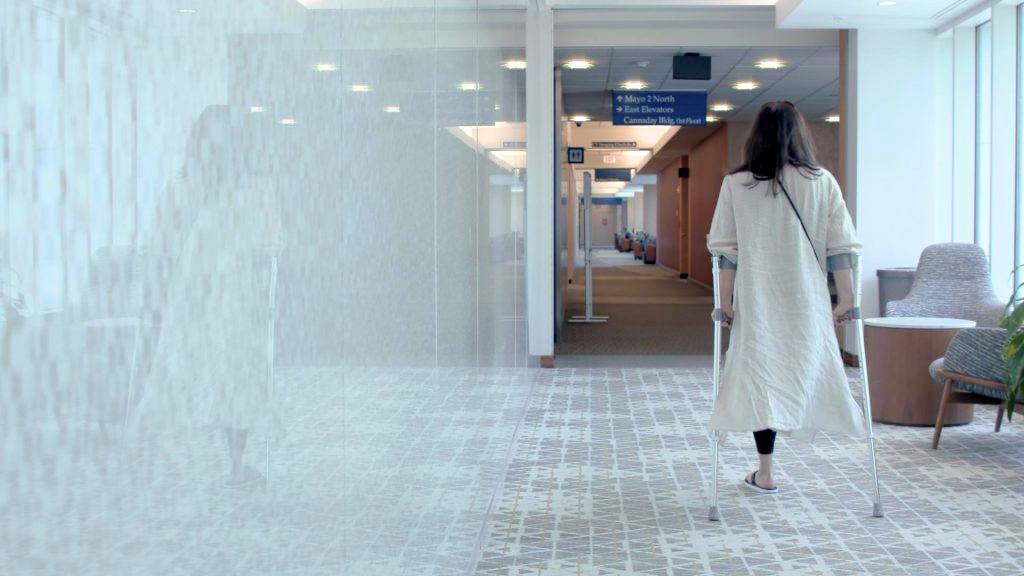-
Cancer
Osseointegration surgery helps amputees regain mobility

More than 185,000 amputations occur in the U.S. annually, according to the Amputee Coalition. Most are lower limb amputations resulting from diabetes, trauma and cancer.
Following limb loss, many patients choose to be fitted with an artificial limb. However, mobility in patients with short residual limbs is often limited, as socket-based prosthetics, which slip onto the stump and form a seal with the skin, do not adhere well, causing a variety of additional health issues.
Watch: Dr. Benjamin Wilke talks Osseointegration
Journalists: Broadcast-quality sound bites with Dr. Wilke are in the downloads at the end of this post. Please courtesy: "Benjamin Wilkie, M.D., / Orthopedic Surgery / Mayo Clinic."
"We find that many patients who have a short residual limb often have difficulty obtaining a good suction seal between their prosthetic limb and the small surface area of skin they have remaining. This can result in limbs falling off, patients having to constantly readjust their limb, or limbs that are ill-fitting and cause skin issues," says Dr. Benjamin Wilke, a Mayo Clinic orthopedic surgeon.
To help address these issues, Mayo Clinic has opened an Osseointegration Clinic to help patients with shorter amputated limbs improve mobility.
"Osseointegration (the direct connection between a surgical implant and bone) is an exciting new field in orthopedic surgery that offers patients who have amputations an improved way of attaching a prosthesis so patients whose amputations make traditional socket wear difficult can improve their ability to walk and lead a normal functioning life," says Dr. Wilke.
While osseointegration has been available for some time, only a few centers in the U.S. have the expertise or infrastructure in place to perform the procedure. The most well-known is Walter Reed National Military Medical Center, where treatment is limited to combat veterans, says Dr. Wilke.
"Mayo Clinic is uniquely positioned to deliver this care because of its model of care. Osseointegration requires team members from different fields, including radiology, orthopedic surgery, plastic and reconstructive surgery, physical therapy and more," he says. "We're very excited to be able to offer this procedure at Mayo Clinic and to help more patients with short limbs ― whether they are veterans or have had an amputation due to cancer or another issue ― have the opportunity to regain mobility and an improved quality of life."
2 surgeries, many benefits
Osseointegration requires two procedures. In the first surgery, doctors place a metal implant directly into the residual bone. After giving the bone time to grow around the implant, a second procedure exposes the implant outside the residual limb and brings muscle and soft tissue together in a way that reduces the patient's risk of infection. Rehabilitation is necessary to strengthen the muscles and bone. After rehabilitation, the patient can connect a new prosthetic directly to the implant.
The entire osseointegration process takes nine months to one year. In addition to eliminating socket-based prosthetics, osseointegration gives patients improved gait, says Dr. Wilke.
"Patients who have had osseointegration procedures are able to mobilize much better and with a much more normal walking cadence than somebody who has a traditional socket," he says.
A patient's view
Mark Detoro was excited to learn that osseointegration was available at Mayo Clinic. Twelve years ago, Detoro had his right leg amputated above the knee after an accident. The special education teacher from Green Cove Spring, Florida, knows all too well the challenges of having a short residual bone.
"I wear my prosthetic leg to work, to the gym, to cut the lawn. But when my legs get slippery from sweat, the prosthetic becomes misaligned, cutting my leg, making it harder to walk," he says.
And the seal just gives way at times. "It's fun when you go to the gym and are on your fourth set and your leg falls off," says Detoro.
Detoro, who recently completed the first phase of surgery, is excited about the future and becoming more active. "Maybe one day, I'll get to running. Or paddleboarding is something I've always wanted to do. It will be nice to not worry about my leg falling off."
For the safety of its patients, staff and visitors, Mayo Clinic has strict masking policies in place. Anyone shown without a mask was either recorded prior to COVID-19 or recorded in a nonpatient care area where social distancing and other safety protocols were followed.







